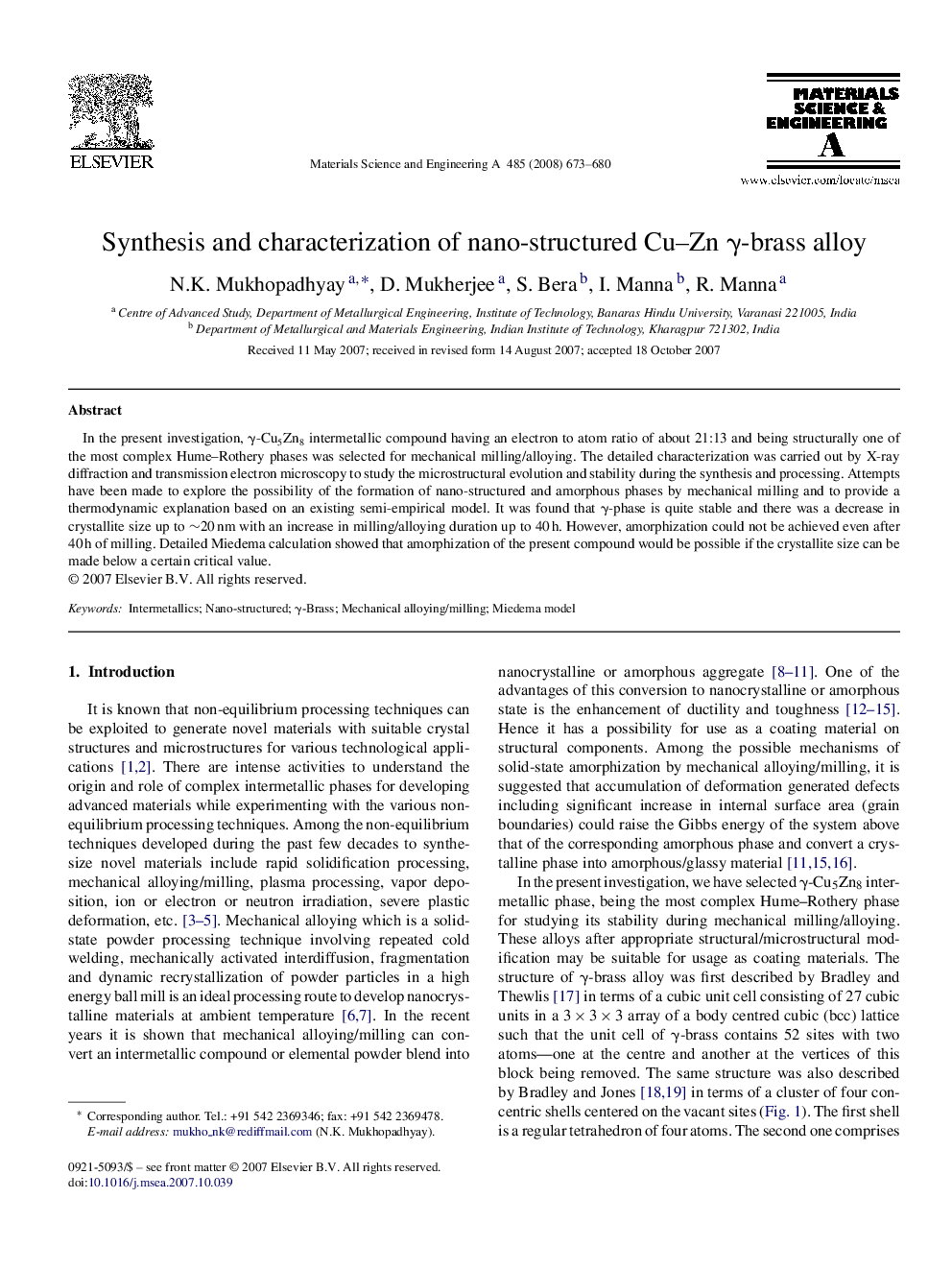| Article ID | Journal | Published Year | Pages | File Type |
|---|---|---|---|---|
| 1582419 | Materials Science and Engineering: A | 2008 | 8 Pages |
In the present investigation, γ-Cu5Zn8 intermetallic compound having an electron to atom ratio of about 21:13 and being structurally one of the most complex Hume–Rothery phases was selected for mechanical milling/alloying. The detailed characterization was carried out by X-ray diffraction and transmission electron microscopy to study the microstructural evolution and stability during the synthesis and processing. Attempts have been made to explore the possibility of the formation of nano-structured and amorphous phases by mechanical milling and to provide a thermodynamic explanation based on an existing semi-empirical model. It was found that γ-phase is quite stable and there was a decrease in crystallite size up to ∼20 nm with an increase in milling/alloying duration up to 40 h. However, amorphization could not be achieved even after 40 h of milling. Detailed Miedema calculation showed that amorphization of the present compound would be possible if the crystallite size can be made below a certain critical value.
